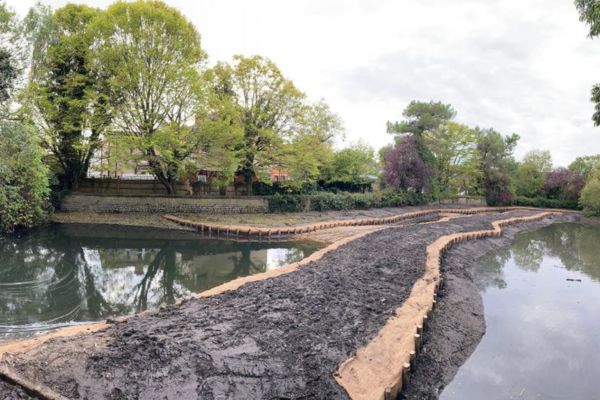Biodiversity Net Gain (BNG), explained

2024 has just started and we are expecting it to be an important one for nature, especially in the UK. It marks the start of the mandatory biodiversity net gain scheme (BNG) in England, which some say is the country’s “flagship nature market”. Under this policy, most planning permissions, including new roads, houses and other building projects must achieve a minimum of 10% biodiversity net gain. Small sites will follow suit in April 2024 and Nationally Significant Infrastructure Projects in 2025.
Biodiversity comes from ‘biological diversity’ and refers to all the different kinds of life in a particular area including animals, plants, fungi and even microorganisms such as bacteria. The term ‘net gain’ means the total increase in the amount or level of, in this case, biodiversity, after deducting losses. This should be achieved preferably on-site, however, if not possible, this can also be done by off-setting or, as a last resource, by buying BNG credits. The scheme also states that the net gain should be maintained for at least 30 years.
BNG had been optional for developers until the Environment Act was passed in 2021, which comes into force this month and made it a requirement for all new developments to improve biodiversity by at least 10%, whether or not developments impact existing biodiversity. However, as some local authorities have had biodiversity net gain, or at least no net loss policies, in place for a few years, some developers are already familiarised with the scheme.
For measuring purposes, biodiversity is standardised in units, which consider the size, quality, location, and type of habitat. Defra has developed a biodiversity metric tool for ecologists to assess biodiversity net gain. This tool can calculate the biodiversity value of existing habitats, habitat enhancement and habitat creation, and can be used throughout all stages of a project, from site selection to delivery. It also categorises units into three different modules: area habitat; hedgerow; and watercourse units.
Speaking of waterways, these are classified as ‘high distinctiveness habitats’ under the BNG scheme and, therefore, any losses must be replaced with biodiversity units of the same habitat type. Having this in mind, Thames21 is creating London River Bank, a one-stop shop for watercourse BNG units across London by working with landowners and local authorities to develop, deliver and sell units in the market, ensuring all profits are reinvested in positive environmental initiatives that benefit local communities. Our river restoration projects can deliver a significant uplift in BNG river units as well as other benefits for people such as improving access, amenity, well-being, and climate resilience.
In times of climate and biodiversity crises, schemes to safeguard, protect and enhance nature are more important than ever. Besides enhancing habitats and improving biodiversity, the BNG policy has great potential to positively impact people’s lives. It can promote health and well-being by providing enjoyable blue and green spaces; and use nature-based solutions to assess flood management, increase climate resilience and improve air and water quality, to name a few.
Even though BNG isn’t the one and only solution to the harm we have caused nature for so long, it is definitely a step towards the right direction – if well implemented and managed. We are looking forward to seeing positive results over time.
